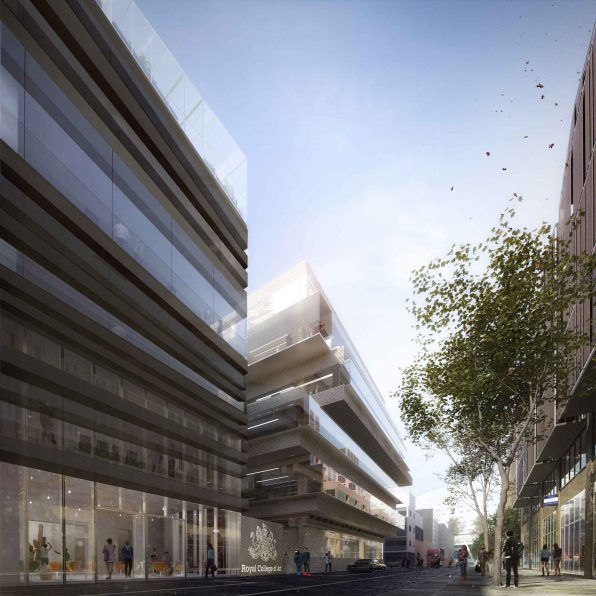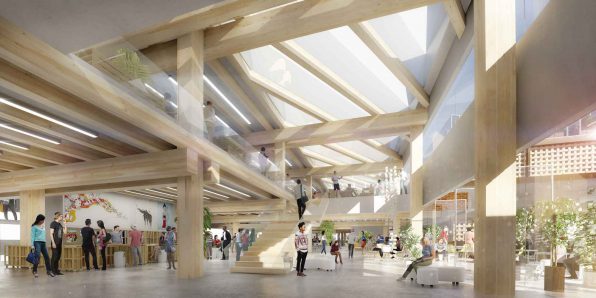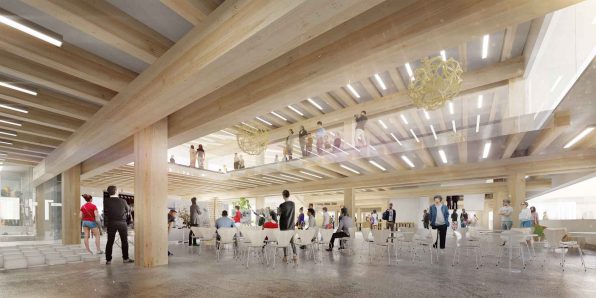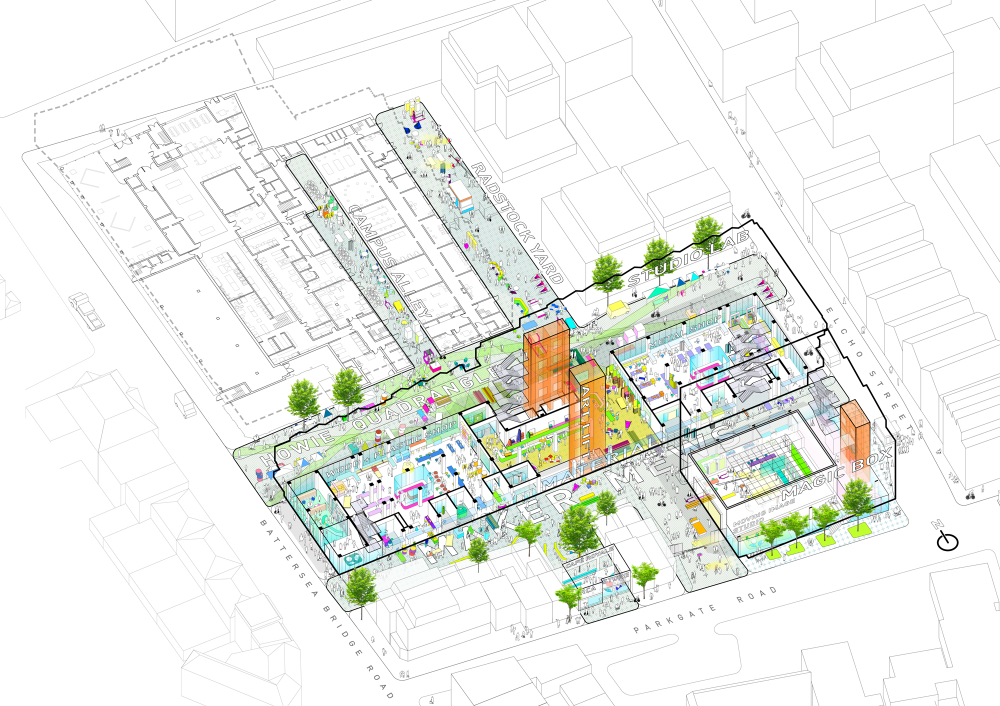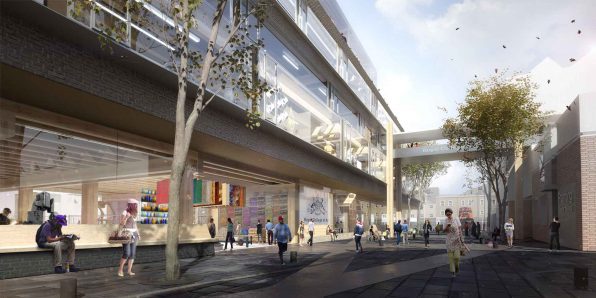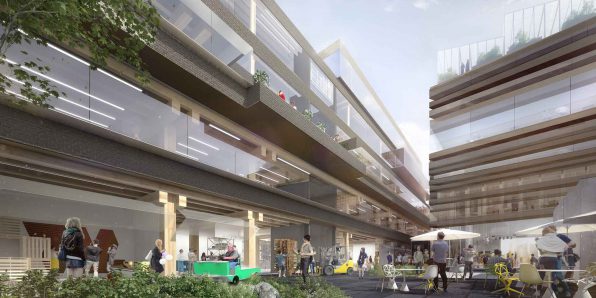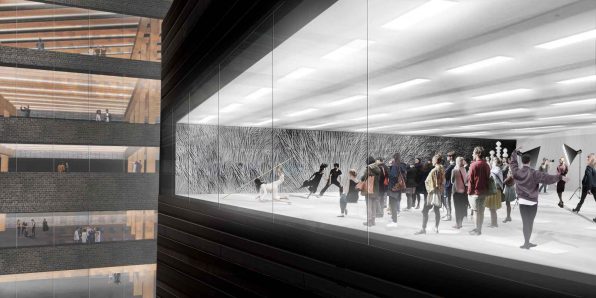Royal College of Art Battersea Campus
Location
London, United Kingdom
Status
Completed 2016
Client
Royal College of Art
Type
Cultural, Educational
Size
161,500 sf on 40,900-sf site
Sustainability
Targeting A-rated EPC (Energy Performance Certificate) and BREEAM Excellent rating
Tags
Catalyzing new relationships between art, design, science, and technology, Studio Gang’s proposal for the Royal College of Art’s Battersea South campus weaves indoor and outdoor spaces to create a flexible yet powerful hub for interdisciplinary innovation and community on its urban site.
The new campus’s entire ground plane—both inside and out—is devoted to making and social mixing. Existing streets and alleys become green quadrangles and maker yards where students and faculty can create, converse, and relax. A central “materials exchange” serves as the heart of the campus, pulling in people from all departments to trade materials and ideas on a daily basis, encouraging cross-field friendships and collaboration.
The ground plane knits new and existing buildings and the surrounding neighborhood into a campus tapestry—a field of social interaction out of which two distinct buildings arise: an adaptable three-dimensional lattice for teaching and experimentation, with modular timber bays that flexibly accommodate different disciplines, and a potent interface with industry, filled with state-of-the-art technical spaces for the RCA’s moving image department and its multidisciplinary research and development entities. All four sides of both buildings perform as fronts—engaging the cityscape at ground level with transparency and at levels above with active facades that invite use and customization.
Consultant Team
Axis, executive architect
